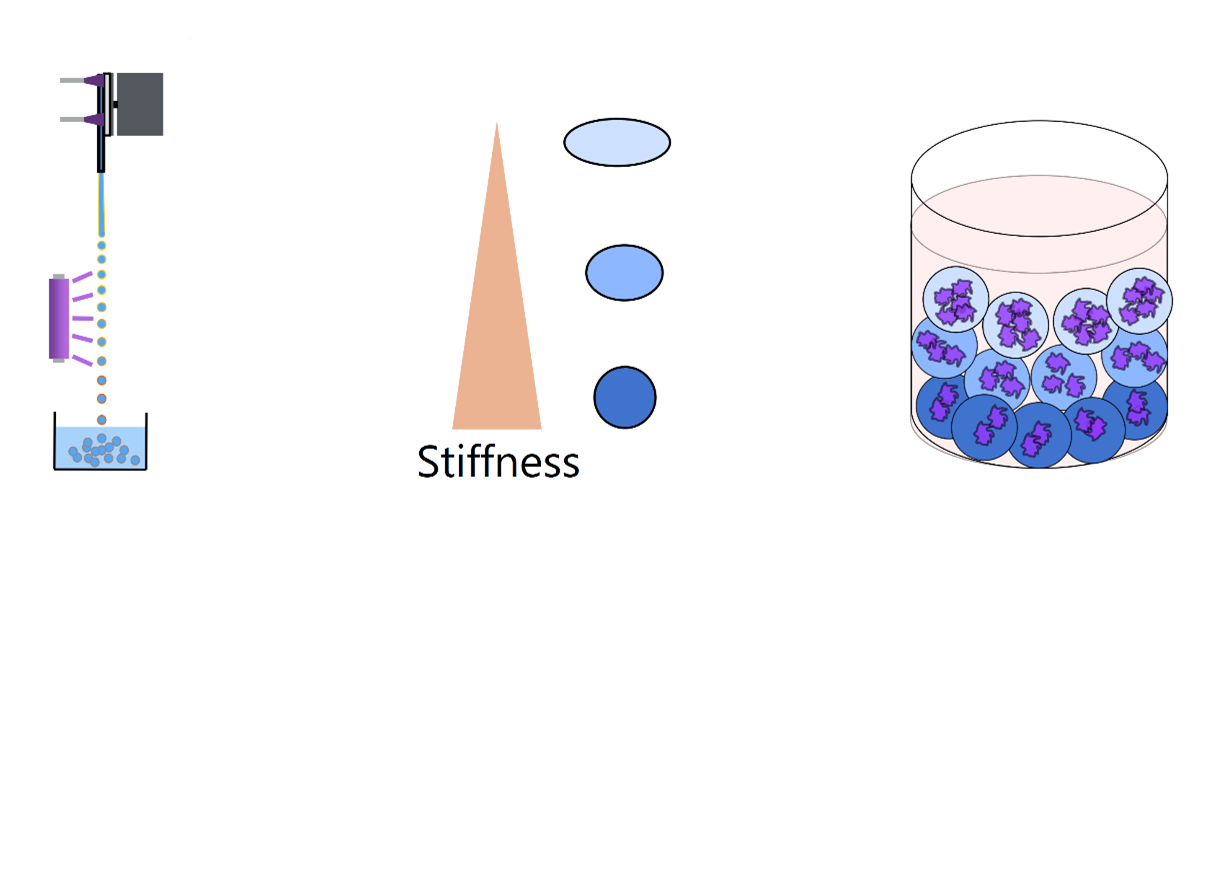Tissues are composed of a mixture of cell types supported by a 3D scaffold of proteins and macromolecules known as the extracellular matrix (ECM). The spatial organization of these components results in gradients of both mechanical and chemical properties, which give rise to each tissue's unique function. There is an urgent need to engineer gradient tissues in vitro to both study cellular behavior and for regenerative medicine. Cell-embedded microgels provide a direct path toward engineering tissue biophysical gradients as individual microgels can be customized, serving as building blocks that can be assembled to fabricate multi-material, multi-stiffness, multi-cellular scaffolds with tunable pore size. Microgel based tissue engineered constructs remain critically bottlenecked by traditional microfluidic fabrication methods that suffer from low throughput, low yield, and limited usable biomaterials. The patented In-air Drop Encapsulation Apparatus (IDEA) technology, developed with LLNL's unique Advanced Manufacturing (AM) capability, overcomes these limitations.
LLNL researchers have enhanced and expanded the IDEA technology, which fabricates micron-scale droplets that are then crosslinked in-air (within milliseconds) using a UV light source before collection. An aerodynamically shearing air jet or acoustic vibration force causes rapid droplet formation. This technology can be useful for a variety of applications such as carbon capture, chemical sensing, and other applications that uses functional particles/capsules.
For the first time, LLNL researchers has applied the IDEA technology to the processing of biomaterials with desired gradient mechanical properties. The technology enables the fabrication of microgels that can be made 10x-100x more viscous compared to materials produced by microfluidics. The tunability afforded by IDEA is key to achieving higher stiffness microgels. This novel approach allows for the development of a high-throughput, versatile, and facile bottom-up tissue engineering method to create gradient tissues using cell-embedded microgels as building blocks.
Image Caption: Schematic process of fabricating cell laden microgels via In-Air Drop Encapsulation Apparatus for making tissue constructs possessing gradients in stiffness
- IDEA-based approach compared to traditional methods for microfluidic-based production:
- Droplet formation up to three orders of magnitude faster.
- Eliminates harsh washing steps; decreases material loss from 80% to <5%.
- IDEA enables the processing of biomaterials that are 10x-100x more viscous.
- Tunability of microgels stiffness.
- Ability to encapsulate a variety of cell types, and biological cargos.
- Potential for introducing new encapsulant chemistries to allow for triggered release of cargo.
- Path towards higher scale manufacturability.
Cellular therapy, tissue scaffolding, drug delivery, gene therapy, cell growth enhancement
Current stage of technology development: TRL-3
LLNL has filed for patent protection on this invention.


